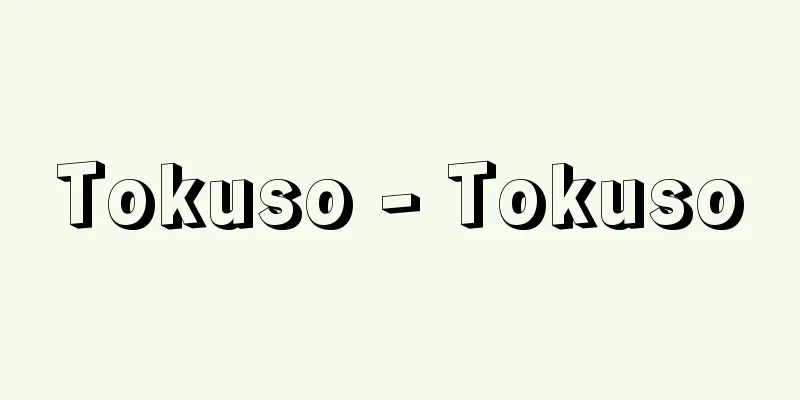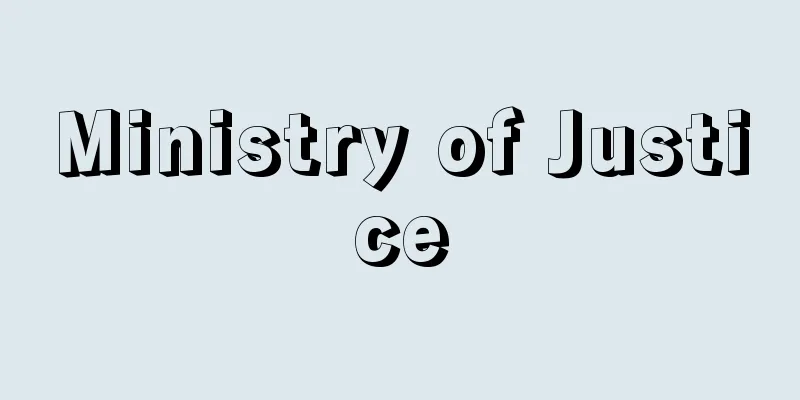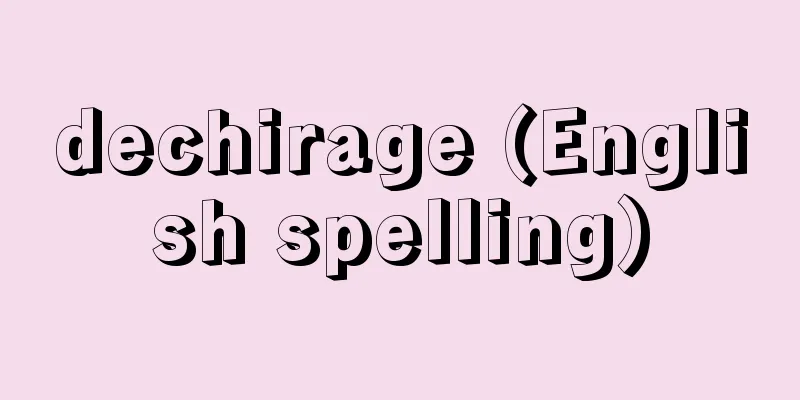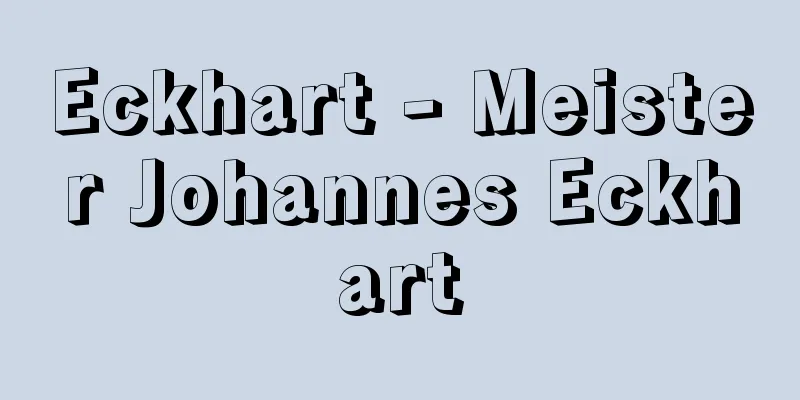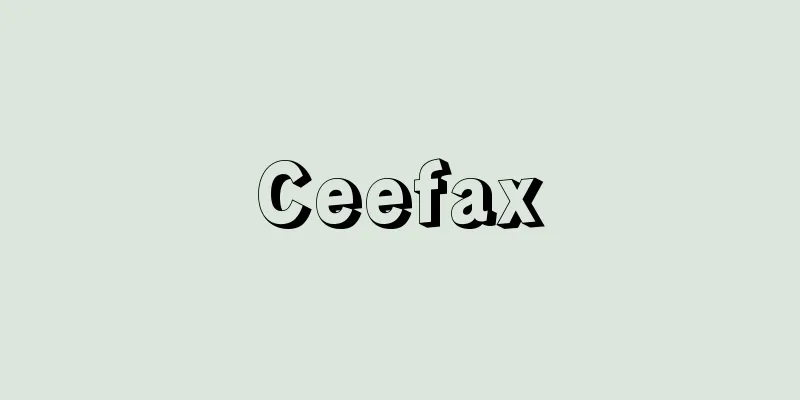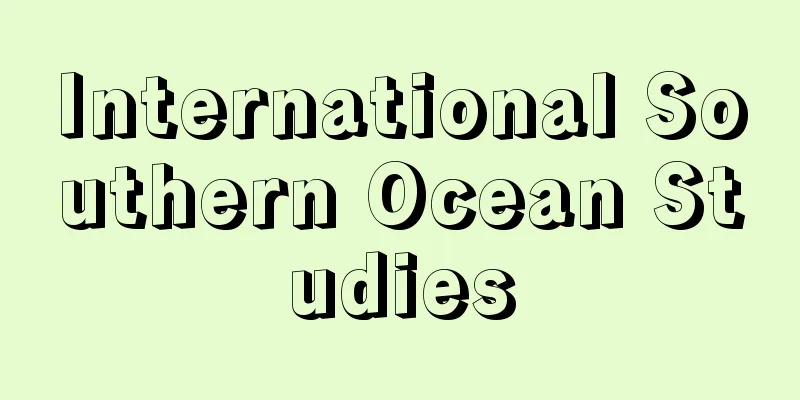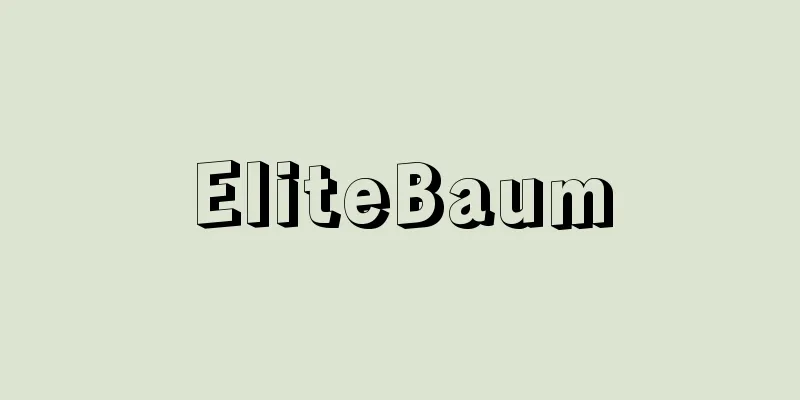Haiti - Republic of Haiti (English spelling)
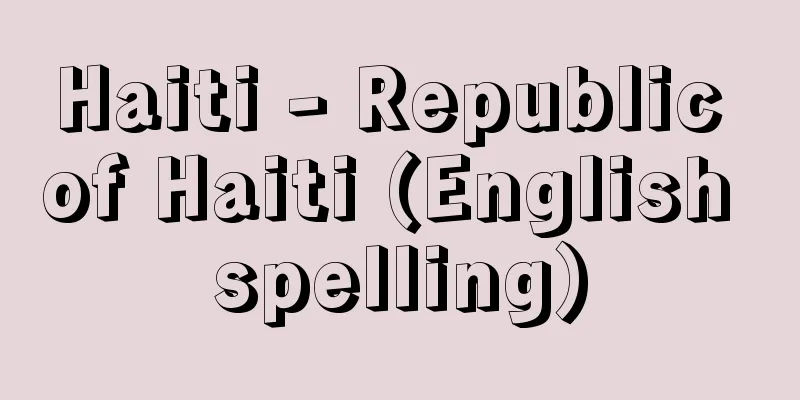
|
A country in the central West Indies. It occupies the western third of Hispaniola, the second largest island in the Greater Antilles after Cuba, which surrounds the northern part of the Caribbean Sea. It borders the Dominican Republic to the east. Its official name is the Republic of Haiti (République d'Haïti). In 1804, it became the second country in the Americas after the United States and the first in Latin America to achieve independence. It is also the only Latin American country whose official language is French. Its area is 27,750 square kilometers, roughly the size of Akita and Iwate prefectures combined, and its population is 8,132,000 (2001), 10,300,000 (2012). Its capital is Port-au-Prince, with a population of about 2 million. Port-au-Prince was devastated by a major earthquake (magnitude 7.1) in January 2010. [Kunimoto Iyo] NatureHaiti means "mountainous land" in the indigenous Arawak language. Flat land accounts for only 17% of the country, with the Northern Mountain Range extending from the neighboring Dominican Republic on the San Nicolas Peninsula in the north, and the Otto Mountains and La Selle Mountains on the long and narrow Jacmel Peninsula in the south. Between the mountain ranges are intermountain basins such as the Northern Plain, the Artibonito Plain, and the Central Plain, which are mainly agricultural areas. Tortue Island is located off the northern coast, and Gonave Island is located off the western coast. Hispaniola is located at the point where the North American Plate and the Caribbean Plate overlap, so it has experienced large earthquakes in the past, including a magnitude 7.5 earthquake in 1751. The climate is tropical, with trade winds blowing from the southeast in summer and the northeast in winter, and the country is divided into a rainy season (April to October) and a dry season (November to March). Annual precipitation varies by region, with Port-au-Prince, which is downwind from the trade winds, getting about 1,250 mm, and the average annual temperature is the highest among the cities in the Antilles. The average annual temperature is 27°C in the coastal areas and 18-22°C in the mountain areas. Hurricanes strike the country from September to November. In 2008, the country was hit by a series of large hurricanes, causing great damage and killing about 800 people. [Kunimoto Iyo] historyHispaniola is the island where Columbus landed on his first voyage in 1492, and was the first place where the Spanish established a colony. The first port, La Navidad, and other attempts to build ports in the western part of the island (present-day Haiti) all failed, and since Santo Domingo was established in the eastern part of the island (present-day Dominican Republic), the Spanish have always focused their attention on the eastern part of the island. The indigenous people at that time were wiped out by attacks by the Spanish. In the early 17th century, French and English pirates based on the small island of Tortue, which is located northwest of Hispaniola, attacked Spanish trading ships in search of treasures to carry from the "New World" to Spain, and eventually they began to settle in the western part of Hispaniola. Later, the French drove out the English and clashed with the few Spanish settlers. In 1697, France acquired sovereignty over the western third of the island through the international treaty, the Treaty of Rijswijk, and named the colony Saint-Domingue. The center of the colony's economy was sugarcane cultivation and sugar production. Sugarcane plantations expanded from Cap-Haitien (Cap-Haitien) on the northern coast to the Artibonite plain and the central plain, making it the largest sugar producing area in the Caribbean and the most wealthy of all the colonies owned by France. To supply the labor force, a large number of Africans were brought as slaves through the triangular trade between Europe, Africa, and the Caribbean, and by the end of the 18th century, the number of African slaves had increased to 500,000 compared to 40,000 whites. In this situation, in 1791, mulattos (people of mixed race) influenced by the French Revolution and free blacks who had been liberated from their owners rose up in revolt, which developed into a major rebellion and became the beginning of the War of Independence. France sent 50,000 troops as reinforcements to try to put down the rebellion, but failed, and independence was achieved in 1804 by Dessalines, a leader of the independence movement. However, Dessalines, following in Napoleon's footsteps, became emperor, expelled the European whites, declared independence as a black African empire, and named the country Haiti. In 1806, the country transitioned to a republic, but internal conflicts led to the division of the country into north and south. The country was then unified in 1820 by President Jean Pierre Boyer (1776-1850). In 1822, the country occupied the Dominican Republic (which declared independence in 1821) on the eastern side of Hispaniola, and controlled the entire island of Hispaniola until 1844. Haiti's history since independence has been marked by repeated internal conflicts, rebellions, and the emergence of dictators. In 1915, the United States intervened militarily in the name of protecting its own people, seizing control of the customs house. In 1934, President F. Roosevelt's Good Neighbor policy led to the withdrawal of troops, but the right to collect customs was not returned until 1941. François Duvalier, who was elected president in 1957, promoted a policy of modernization. Duvalier was called Papa Doc and gained the trust of the people, but on the other hand, he used his personal guard, the Tonton Macoute (secret police), which was gathered under the name of citizen volunteers, to wipe out opposition forces, and created a police state by censoring speech, banning assemblies, and imprisoning those who opposed Duvalier. In 1964, he amended the constitution and became president for life. After Duvalier's death, his son Jean-Claude Duvalier (1951-2014) became president at the age of 20 in 1971 and maintained the dictatorship. He was initially strongly influenced by the political aides of his father's presidency, but eventually gained the cooperation of blacks, whites, and mulattos to implement his own unique, profit-driven politics, known as Jean-Claudism. However, the basic character of the country as a police state remained unchanged, and in November 1985, a large-scale demonstration demanding food and jobs was held in Gonaives, 150 kilometers north of the capital, which triggered an explosion of accumulated social discontent and spread throughout the country. The government was unable to quell the unrest, and in February 1986, the president and his family escaped Haiti on a US military plane and went into exile in France, and the 29-year-old dictatorship of Duvalier and his son collapsed. With the collapse of the dictatorship, the National Council of Ministers, chaired by Army Chief of Staff Henri Namphy (1932-), took power, but in 1990, a presidential election was held under the supervision of international election observers, and Jean-Bertrand Aristide (1953-), a Christian priest of the Theology of Liberation, was elected president. However, the military staged a coup and ousted the president. After that, amid international criticism and economic sanctions, Aristide returned to power in 1994 with the support of a multinational force, mainly composed of American troops. During this time, the military and police cracked down on opposition citizens and violated their human rights, and the number of boat people heading to the United States in small boats increased rapidly due to the deterioration of public safety and economic hardship, attracting international attention. Even after Aristide's return to power, UN peacekeeping forces remained stationed in the country, and the Aristide administration worked to build a new country under the watchful eye of the international community. René Garcia Préval (1943-2017), elected in the 1995 presidential election of the Hope Party, worked to improve relations with neighboring countries, normalizing diplomatic relations with the socialist country of Cuba, and visiting the neighboring Dominican Republic for the first time in 61 years as Haitian president. In the 2000 presidential election, Aristide was re-elected, and in 2001, he became president while the opposition coalition claimed the election was invalid. In 2004, Haiti celebrated the 200th anniversary of independence, but the country was in turmoil, with large-scale demonstrations in January calling for Aristide's resignation as he became increasingly dictatorial. In February 2004, clashes continued between anti-government armed groups demanding the president's resignation and the president's supporters, and the armed groups seized regional cities and declared an attack on the capital, Port-au-Prince, leading to the dispatch of US Marines to Port-au-Prince on February 24 to maintain security. Following urging from France and the United States to step down, Aristide resigned as president and went into exile in the neighboring Dominican Republic. In order to calm the ensuing unrest, the United Nations established the United Nations Stabilization Mission in Haiti, dispatching peacekeeping forces, mainly Brazilian troops, to restore order, and several thousand personnel to democratize and stabilize politics, and to provide human rights and humanitarian assistance. With such support from the international community, Preval was re-elected in the 2006 presidential election. However, the domestic situation deteriorated drastically, with a major earthquake on January 12, 2010, killing approximately 300,000 people, and a cholera epidemic in October of the same year killing more than 1,000 people. In the presidential election in November 2010, no candidate received an absolute majority, and a civil movement denouncing allegations of election fraud developed into riots, so a runoff election was held in March 2011, and Michel Martelly (1961- ), a former pop singer, was elected president and took office in May of the same year. [Kunimoto Iyo] Politics and DiplomacyThe government system is a republic, with the head of state being the president, elected by direct popular vote, for a term of five years. Consecutive reelection is prohibited. The French-style cabinet system is followed, with the president nominating the prime minister. The current constitution, enacted in 1987, amended the parliament to a bicameral system consisting of the Senate (30 seats) and the House of Representatives (99 seats), with terms of six and four years, respectively. As the only French-speaking country in Latin America, it has traditionally had weak relations with its neighboring countries, and has historically been in conflict with the neighboring Dominican Republic in particular. In recent years, there has been conflict over the issue of illegal Haitian immigrants being held in the Dominican Republic, but since the collapse of the Duvalier dictatorship, the country has accepted the intervention of international organizations such as the United Nations and the support of many countries, and is improving its relations with neighboring countries, and its foreign relations have changed significantly. [Kunimoto Iyo] Economy and IndustryAgriculture is the country's main industry, accounting for 26% of gross domestic product (GDP) (2009), 24% of exports, and 75% of the workforce. Coffee, sugar, cocoa, rice, and corn are the main commodity crops, with coffee being the largest export. Coffee trees planted on mountain slopes are barely tended and full of wildness, which creates a unique aroma that is highly valued in France, and it is mainly exported to France. Agricultural productivity is low, and although it is an agricultural country, Haiti is unable to produce food self-sufficiency and relies on imports. This is because sugarcane plantations previously managed by the French were destroyed after the Haitian Revolution in 1791, and large farmland was divided among farmers, and the civil war that continued afterwards led to a steady decline in Haiti's agriculture. In 2009, the share of industry in the country's GDP rose to 24% but it is still at the light industry stage. Industry is divided into export-oriented industries (baseball equipment, electrical equipment, electronic parts) and domestic-oriented industries (vegetable oil, footwear, metal products), with the export-oriented industries being assembly industries that import raw materials from the United States and export the finished products. Factors behind this growth include geographical proximity to the United States, tax incentives, and above all, an abundant and cheap labor force. The majority of baseballs and softballs used in the United States are produced in Haiti, and the United States accounts for 50% of both exports and imports. The construction sector has also shown strong growth since the late 1970s, driven by public investment and foreign-funded construction of assembly plants. Mining, along with agriculture, is an important export sector, most of which is bauxite. The currency is the gourde. [Kunimoto Iyo] Society and Culture90% of the population is African black, and the majority of the rest are mixed race mulattos, a mix of African black and European whites. There is also a very small number of European whites. This racial composition gives the country's culture a distinctive character, and while it was strongly influenced by France, the colonial power, African customs remain strong. The official languages are French and Creole, and Creole, a mixture of African and French languages, is widely used as everyday language. In addition, Catholicism (about 65%) is the mainstream religion, but Voodoo, which originated in Africa, is widely accepted as a folk belief. In addition, African elements are strongly seen in folk music and traditional dance, creating a world that is significantly different from the Spanish cultural sphere of the neighboring Dominican Republic. The education system is French, and only primary education is compulsory. Most of the economic and social indicators are among the lowest in Latin America, including a per capita gross national income of $760 (2012), a literacy rate (population aged 15 and over) of 48.7% (estimated for 2006), and an average life expectancy of 63 years (2011), making it the poorest country in the Western Hemisphere. The Citadel, Sans Souci, and Ramiers National Historical Parks have been registered as UNESCO World Heritage Sites (cultural heritage) (1982). [Kunimoto Iyo] Relations with JapanHaiti and Japan established diplomatic relations in 1953. As a major donor country, Japan has proactively provided emergency assistance to Haiti following hurricane and earthquake disasters. In terms of trade relations, Haiti exports mainly coffee beans to Japan, but imports of automobiles and machinery from Japan stand out, with the value of imports far exceeding the value of exports. Exchanges of personnel are extremely limited. [Kunimoto Iyo] "The Haitian Revolution and the French Revolution" by Hama Tadao (1998, Hokkaido University Press)" ▽ "From Columbus to Castro: A History of the Caribbean, 1492-1969, I and II, by Eric Williams, translated by Kawakita Minoru (2000, Iwanami Shoten)" ▽ "The Glory and Tribulations of Haiti: The Future of the World's First Black Republic" by Hama Tadao (2007, Tosui Shobo) [References] | | | | | | [Additional information] |"> Haiti flag ©Shogakukan Illustration/Shogakukan Creative "> Haiti Location Map Source: Shogakukan Encyclopedia Nipponica About Encyclopedia Nipponica Information | Legend |
|
西インド諸島中部の国。カリブ海の北側をとりまく大アンティル諸島のなかでキューバ島に次いで二番目に大きいイスパニョーラ(エスパニョーラ)島の西側3分の1を占める。東をドミニカ共和国と接する。正式名称はハイチ共和国République d'Haïti。1804年、南北アメリカ大陸ではアメリカ合衆国に次いで二番目に、ラテンアメリカ(中南米)では最初に独立を達成した。また、フランス語を公用語とするラテンアメリカ唯一の国である。面積は秋田県と岩手県をあわせたほどの2万7750平方キロメートルで、人口813万2000(2001)、1030万(2012)。首都はポルトー・プランスで人口は約200万。ポルトー・プランスは2010年1月の直下型大地震(マグニチュード7.1)で壊滅状態になった。 [国本伊代] 自然ハイチとは先住民アラワクのことばで「山の多い土地」を意味する。平地は国土の17%にすぎず、北部のサン・ニコラス半島には隣国ドミニカ共和国から続く北部山脈が、南部の細長いジャクメル半島にはオット山脈とラ・セル山脈が連なっている。山脈と山脈の間には、北部平野、アルティボニート平野、中央平野などの山間盆地があり、おもな農業地帯となっている。北部沿岸沖にトルチュ島、西部沿岸沖にゴナーブ島がある。イスパニョーラ島は北アメリカプレートとカリブプレートの重なる地点にあるため、過去にも大きな地震があり、1751年にはマグニチュード7.5という大地震を経験している。 気候は熱帯に属し、夏は南東、冬は北東の貿易風が吹き、雨季(4~10月)と乾季(11~3月)に分かれる。年間降水量は地域によって異なり、貿易風の風下にあるポルトー・プランスでは約1250ミリメートルで、年間平均気温もアンティル諸島の都市のなかでもっとも高い。年間平均気温は海岸地帯で27℃、山間地帯で18~22℃。9月から11月にかけてハリケーンが襲来する。2008年には立て続けに大型ハリケーンに襲われて大きな被害を出し、約800人が死亡した。 [国本伊代] 歴史イスパニョーラ島はコロンブスが1492年の第一次航海で上陸した島で、スペイン人が最初に植民地を建設した地である。最初の港ラナビダをはじめ、島の西部(現在のハイチ)でいくつかの港の建設が試みられたがいずれも失敗し、島の東部(現在のドミニカ共和国)にサント・ドミンゴが建設されて以来、スペイン人の関心はつねに島の東部に集中した。当時の先住民はスペイン人の攻撃によって絶滅。17世紀初めに、イスパニョーラ島の北西に浮かぶ小さなトルチュ島を基地にしたフランス人とイギリス人の海賊が、「新大陸」からスペインに運ぶ財宝を狙ってスペインの交易船を襲撃し、やがて彼らはイスパニョーラ島の西部に定住するようになった。その後、フランス人はイギリス人を追い出し、入植した数少ないスペイン人と衝突した。1697年に締結された国際条約ライスワイク条約によってフランスが島の西側3分の1の領有権を獲得して、この植民地をサン・ドマングと名づけた。サン・ドマング植民地経済の中心はサトウキビの栽培と砂糖の生産であった。サトウキビのプランテーションは、北部海岸のカパイシェン(カプ・ハイティエン)からアルティボニート平野、中央平野にまで拡大してカリブ海域で最大の砂糖生産地となり、フランスが所有する植民地のなかでももっとも富を生み出す植民地となった。その労働力として、ヨーロッパ・アフリカ・カリブ海地域の三角貿易により、アフリカ人が奴隷として大量に連れてこられ、18世紀末には4万人の白人に対してアフリカ人奴隷が50万人を数えるまでに増大した。このような状況の1791年に、フランス革命の影響を受けたムラート(黒人と白人の混血)と所有者から解放された自由黒人が蜂起(ほうき)し、大反乱へと発展して独立戦争の発端となった。フランス本国は5万人の兵力を援軍として送り反乱を鎮圧しようとしたが失敗し、1804年に独立運動の指導者デサリーヌによって独立が達成された。しかしデサリーヌはナポレオンにならって皇帝として即位し、ヨーロッパ系の白人を追放してアフリカ系の黒人帝国として独立を宣言、国名をハイチとした。1806年に共和制へ移行したが、内紛によって国土を南北に二分する対立が起きた。その後、1820年大統領ボアイエJean Pierre Boyer(1776―1850)によって統一された。1822年にはイスパニョーラ島東側のドミニカ共和国(1821年独立を宣言)を占領し、1844年までイスパニョーラ島全体を支配した。 独立後のハイチの歴史は内紛と反乱、そして独裁者の出現の繰り返しであった。1915年にアメリカは自国民の保護を名目に軍事干渉を行い、税関の管理権を握った。1934年に大統領F・ルーズベルトの善隣政策によって軍隊を撤退させたが、関税の徴収権を返還したのは1941年である。1957年の大統領選挙で選出されたフランソワ・デュバリエは近代化政策を推進した。デュバリエはパパ・ドックとよばれて国民の信望を集めたが、他方で市民義勇兵の名で集められたデュバリエの親衛隊トントン・マクート(秘密警察)を使って反対勢力を一掃し、言論統制、集会の禁止、反デュバリエ派の投獄などを行って警察国家をつくりあげ、1964年に憲法を改正して自ら終身大統領となった。 デュバリエの死後、1971年に息子のジャン・クロード・デュバリエJean-Claude Duvalier(1951―2014)が20歳で大統領に就任して独裁制を保持した。彼は当初、父親の大統領時代の側近の政治的影響を強く受けたが、やがて黒人、白人、ムラートの協力を取り付けてジャン・クローディズムとよばれる独自の利益誘導型政治を行った。しかし警察国家としての基本的性格は変わらず、1985年11月に首都の北方150キロメートルのゴナイブで食料と仕事を求める大規模なデモが行われたのを発端に、蓄積していた社会的不満が爆発し、デモは全国に波及した。政府は騒乱状態を鎮圧できず、1986年2月に大統領とその家族はアメリカの軍用機でハイチから脱出してフランスに亡命し、29年にわたるデュバリエ親子による独裁体制は崩壊した。 独裁体制の崩壊によって、陸軍参謀長アンリ・ナンフィHenri Namphy(1932― )を議長とする国家閣僚評議会が政権を握ったが、1990年に国際選挙監視団が監視するなかで行われた大統領選挙でキリスト教「解放の神学派」の神父ジャン・B・アリスティドJean-Bertrand Aristide(1953― )が大統領に選出された。しかし軍部はクーデターを起こして大統領を追放した。その後、国際的な非難と経済制裁のなかで1994年に送り込まれたアメリカ軍を主力とする多国籍軍の支援の下でアリスティドの政権復帰が実現した。この間、軍部と警察による反対派の国民に対する弾圧と人権侵害は過酷をきわめ、治安の悪化と経済の困窮から小舟でアメリカへ向かうボートピープルが急増して国際的な注目を集めた。アリスティドの政権復帰後も国連平和維持部隊が駐留し、国際社会が見守るなかでアリスティド政権は新しい国づくりに取り組んだ。 1995年の大統領選挙で選出された希望党のルネ・プレバルRené Garcia Préval(1943―2017)は、近隣諸国との関係改善に取り組み、社会主義国キューバとの国交を正常化したほか、ハイチ大統領として61年ぶりに隣国ドミニカ共和国を訪問した。2000年の大統領選挙では、アリスティドがふたたび選ばれ、野党連合が選挙の無効を主張するなかで、2001年に大統領に就任した。2004年にハイチは独立200周年を迎えたが、独裁色を強めるアリスティドに対して1月に退陣を求める大規模なデモが起こるなど国内は混乱した。2004年2月大統領辞任を求める反政府系武装集団と大統領派の衝突が続き、武装集団は地方都市を陥落させ、首都ポルトー・プランスへの進攻を宣言したため、2月24日には治安維持のためアメリカ海兵隊がポルトー・プランスに送り込まれた。フランスとアメリカの大統領退陣勧告を受けて、アリスティドは大統領を辞任し、隣国ドミニカ共和国に亡命した。 その後の混乱を鎮静化するために、国連は国連ハイチ安定化ミッションを設立し、ブラジル軍を主力とする平和維持軍を派遣して秩序回復に努め、政治の民主化と安定および人権と人道支援のために数千名にのぼる要員を派遣した。このような国際社会の支援の下で、2006年の大統領選挙ではプレバルがふたたび選出された。しかし、2010年1月12日には大地震が発生しておよそ30万人の死者を出し、さらに同年10月にはコレラが大流行して死者数は1000人を超えるなど、国内情勢は極度に悪化した。2010年11月の大統領選挙では絶対多数を得た候補者がおらず、また選挙の不正疑惑を糾弾する市民運動が暴動へと発展したため、2011年3月に決選投票が行われた結果、ポピュラー歌手出身のマーテリーMichel Martelly(1961― )が大統領に選出され、同年5月に就任した。 [国本伊代] 政治・外交政体は共和制をとり、元首は国民の直接投票によって選出される大統領で、任期は5年である。連続再選は禁止されている。大統領が首相を指名するフランス型内閣制をとる。1987年に制定された現行憲法によって改正された議会は、上院(30議席)と下院(99議席)からなる二院制で、任期はそれぞれ6年と4年である。ラテンアメリカ唯一のフランス語国であることから伝統的に周辺諸国との関係は希薄で、とりわけ隣国ドミニカ共和国とは歴史的にも対立してきた。近年はドミニカ共和国におけるハイチ人不法移民の滞留問題でも対立関係にあるが、デュバリエ独裁体制の崩壊後国連をはじめとする国際組織の介入と多くの国の支援を受け入れ、近隣諸国との関係改善も進められていて、対外関係は大きく変化している。 [国本伊代] 経済・産業基幹産業は農業で、国内総生産(GDP)の26%(2009)、輸出の24%、労働人口の75%を占めている。コーヒー、砂糖、カカオ、米、トウモロコシが主要商品作物で、なかでもコーヒーが最大の輸出産品である。山腹斜面に植樹されたコーヒーは、ほとんど手入れされず野生味にあふれ、それが独特の香りをつくりだすことからフランスで珍重され、おもにフランスに輸出されている。農業の生産性は低く、農業国でありながら食糧は自給できずに輸入に依存している。かつてのフランス人の経営によるサトウキビのプランテーションが、1791年のハイチ革命以降破壊され、大農地が農民に分割されたことと、その後も内乱が続いたことによってハイチの農業が衰退の一途をたどったためである。 工業は、2009年には国内総生産に占める割合を24%台にまで高めているが、依然として軽工業の段階を脱していない。輸出向け工業(野球用品、電気機器、電子部品)と国内向け工業(植物性油、履き物、金属製品)とに分けられ、輸出向け工業はアメリカ合衆国から原材料を輸入して完成品を輸出する組立て工業である。その成長要因として、同国との地理的近接性、税制上の優遇措置に加えて、なによりも豊富で安価な労働力の存在があげられる。アメリカで使用される野球用品の硬球、ソフトボールの大部分がハイチで生産されており、輸出入ともその5割をアメリカが占めている。 建設業部門も1970年代後半から高い成長率を示したが、公共投資と外資による組立て工場の建設によって誘引されたものである。鉱業は農業と並んで重要な輸出部門であり、そのほとんどはボーキサイトである。通貨はグールド。 [国本伊代] 社会・文化国民の90%をアフリカ系黒人が占め、残りのほとんどはアフリカ系黒人とヨーロッパ系白人の混血ムラートである。そのほかにごく少数のヨーロッパ系白人が存在する。このような人種構成はこの国の文化に大きな特色を与えており、植民地時代の宗主国であったフランスの影響を強く受けながら、アフリカ的な慣習が色濃く残っている。公用語はフランス語とクレオール語で、アフリカ言語とフランス語の混じったクレオール語は日常語として広く使われている。また宗教はカトリック(約65%)が主流であるとはいえ、アフリカに起源をもつブーズー教(ブードゥー教)が民俗信仰として広く受け入れられている。そのほかに民衆音楽や伝統的舞踊などにもアフリカ的なものが強くみられ、隣国のドミニカ共和国が属するスペイン系文化圏とは著しく異なる世界をつくりあげている。教育制度はフランス制で、初等教育のみが義務教育となっている。1人当り国民総所得760ドル(2012)にはじまり、識字率(15歳以上人口)の48.7%(2006年推計)、平均寿命63歳(2011)など経済社会指標のほとんどがラテンアメリカ諸国の最低水準を示し、西半球でもっとも貧しい国となっている。ユネスコの世界遺産(文化遺産)にシタデル、サン・スーシ、ラミエの国立歴史公園が登録されている(1982)。 [国本伊代] 日本との関係ハイチと日本は1953年(昭和28)に国交を樹立した。ハイチで発生したハリケーンや地震の災害に対して日本は主要な援助国として積極的な緊急支援を実施している。貿易関係では、ハイチから日本へコーヒー豆を中心とする輸出があるが、日本からの自動車や機械類の輸入が際だっており、輸入額が輸出額を大幅に上回っている。人材交流はきわめて限定的である。 [国本伊代] 『浜忠雄著『ハイチ革命とフランス革命』(1998・北海道大学図書刊行会)』▽『エリック・ウィリアムズ著、川北稔訳『コロンブスからカストロまで――カリブ海域史、1492―1969』Ⅰ、Ⅱ(2000・岩波書店)』▽『浜忠雄著『ハイチの栄光と苦難――世界初の黒人共和国の行方』(2007・刀水書房)』 [参照項目] | | | | | | [補完資料] |"> ハイチの国旗 ©Shogakukan 作図/小学館クリエイティブ"> ハイチ位置図 出典 小学館 日本大百科全書(ニッポニカ)日本大百科全書(ニッポニカ)について 情報 | 凡例 |
<<: Land purchase certificate - baichiken (English)
>>: Haidar Ali (English spelling)
Recommend
Matteo Bandello
1485‐1561 Italian novelist. Born in northern Italy...
symphonie concertante
...This is typical of the Baroque period, but a m...
Blue sky
→Glaucoma Source: Asakura Publishing Nutrition and...
Kunming
A prefecture-level city in the northeastern part ...
Inagi
The title of a local official in the Yamato Imper...
abyssal
In marine biology, the deep sea refers to a depth...
Vacuum plating; vacuum evaporation coating
A method of obtaining a thin film by attaching a t...
Traffic crime
This refers to crimes related to land, water, and ...
Eisuke Tashiro
The prime minister (supreme leader) of the Chichi...
Concholepas concholepas;barnacle rock-shell
Mollusca, Gastropoda, Muricidae. Also called Loco ...
Hoplopleuridae
…Pig lice and wild boar lice are considered to be...
Smilax biflora (English spelling)
…[Tetsuichi Yahara]. … *Some of the terminology t...
Wakayanagi [town] - Wakayanagi
An old town in Kurihara County in northern Miyagi ...
Sciapodes
…He also said that varicose veins only occur in m...
Gaufridy, L.
...In a demon possession case set in a 17th centu...
